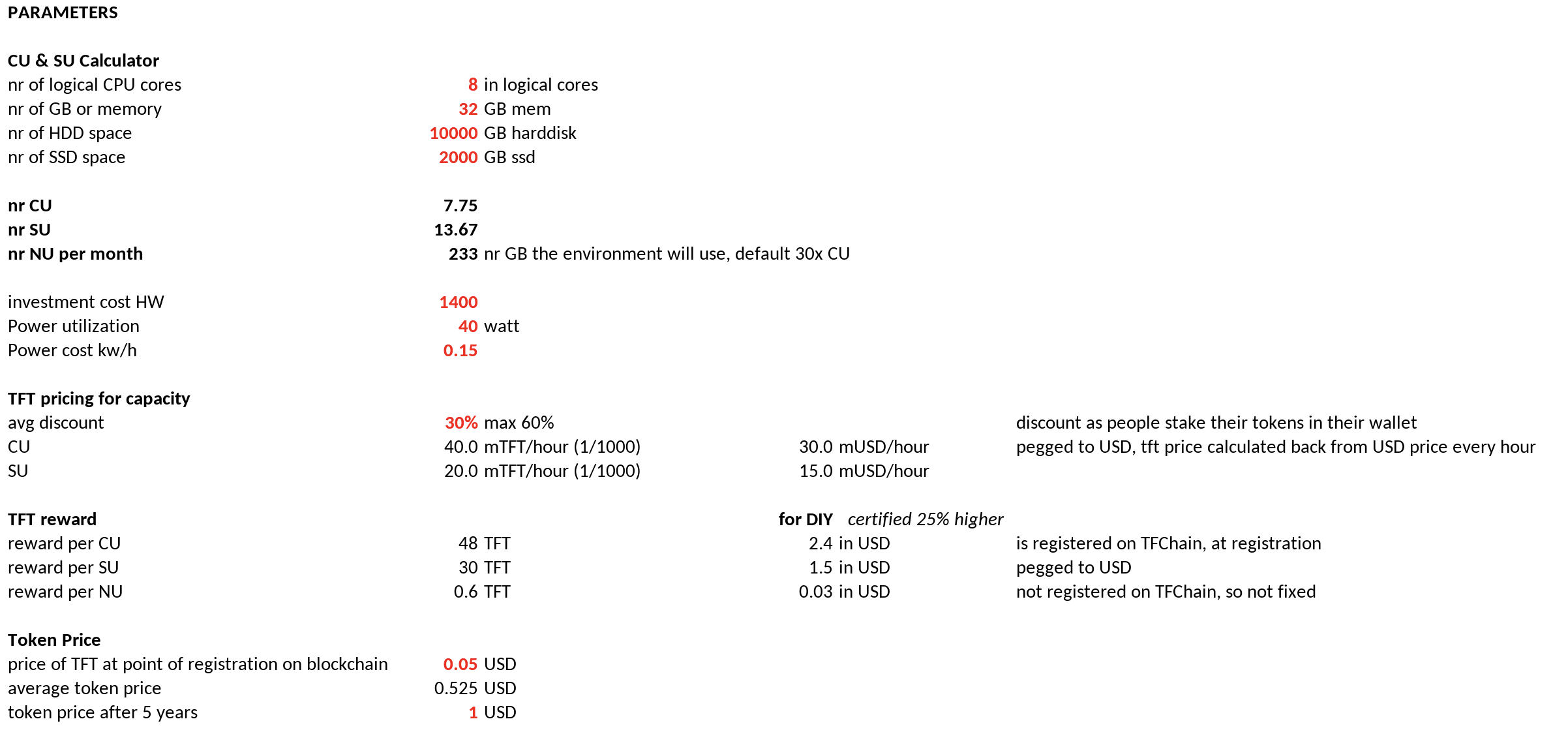Hi!
Thank you for this post. I find it very useful.
I have a question concerning the rewards attributed to nodes. It especially concerns the parameter: “price of TFT at point of registration on blockchain” on this spreadsheet.
From DIY farming experience and what I understand, this means that when you connect a node for the first time online, the Grid will check the price of the TFT and this will be assigned to your specific node. If you hook up another node 1 month later, where the TFT price is different, the Grid will assigned this new price to “this” new node. Is this correct? And then the price attributed stays the same (constant)? Is this also correct?
So if you have 2x the same 3node set-up, but you connect them at a different time, and the first time it’s at x$ and the second time at 2x$, one node would do twice the same amount of TFT as the other, even if they are the exact same hardware set-up? If this is so, I wonder if this can lead to problems in the overall ecosystem. I mean, the two systems give the same service to the Grid but one gets more TFT?
Also, I wonder… Is this parameter built to give an incentive for farmers to be there early in the Grid? (With the starting hypothesis that the price goes up in time.) If so, is this the best way to proceed? It seems to simply create an unfair advantage to enter when the market is low and then it impacts the future of all token distributions. I really wonder if this parameter is healthy for the project.
Maybe I am missing something. I might be way off the track. Also, what if 10 farmers get in when the price is low, but offer poor services to the Grid, while 10 other farmers get in when the price is high, but offer great services to the Grid. Is this fair?
Could this lead to a difficult situation where a group of people would create a market manipulation where they “dump” the price of TFT and then set up their nodes at low prices? Then when they want to sell, they pump the price up and sell their proportionally large quantity of tokens.
I would have thought that it would be more “fair” for all farmers that the more time your node has been on the Grid, the more tokens you would get, independently of the price of TFT when a certain node has been put online. Or maybe that the TFT distribution amongst farmers is set-up to give the most TFT to all participants based on the current TFT price, and the quality of farming offered by each farmers (total time online, less % of time offline, etc.).
Building on the last parenthesis, an incentive could be to reward the farmers with the most uptime overall. (Not just the period of time since the last time the node turned offline, as this data is very local and does not represent the overall health of the node, i.e. the node could be offline 10 minutes for maintenance every 3 months but online +/-99.99% of the time for years.)
I think Threefold is amazing and I am a happy farmer! Those questions are out of curiosity and respect for this project. I hope I am being clear here.
Thank you for your time and great work!
(Edited typos)





 x 60 is actually 5years x12 months =60
x 60 is actually 5years x12 months =60
 ) it would make sense that if hardware is added (or removed) from a node, there should exist some kind of mechanism to verify this (every month?) and readjust the rewards accordingly, but keeping the original token price. It would prevent someone from trying to time token price (when adding or removing hardware) and reward correspondingly to the hardware that is effectively contributing to the grid.
) it would make sense that if hardware is added (or removed) from a node, there should exist some kind of mechanism to verify this (every month?) and readjust the rewards accordingly, but keeping the original token price. It would prevent someone from trying to time token price (when adding or removing hardware) and reward correspondingly to the hardware that is effectively contributing to the grid.